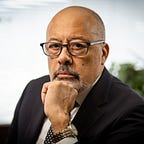Do Your Diversity, Equity and Inclusion Change Efforts have SPINE?
Today’s disruptive and transformative times require DEI initiatives and change efforts to be carefully and intentionally developed, deliberately implemented, and impactfully considered. Are you innovating your DEI change efforts for sustainable competitive advantage in America’s 21st century work environment? Do your efforts have backbone, or SPINE?
So, what is SPINE? It is the backbone of inclusion!
Let me break it down to you! SPINE is an acronym for strategy, practice, ideation, need and effectuation. It requires leaders who are committed and who own the process. Otherwise your are leader-less. Leaders who do not get the important of the work are absent or missing in action. LESS is an acronym for leadership, expectations, systems and solutions
Change agents must address critical question and issues in each of the dimension of SPINE.
S — Strategy:
Is the initiative a fun-filled set of activities with no purpose or coordination? Or, is it a lens through which you assess business objectives, deliverables and outcomes? Is it leader led and owned by the organizational leaders? Does it pack a punch? Has your initiative gotten the notice of your board of directors?
P — Practice:
Are the professionals leading the effort fumbling in the dark with little context, skill or background in DEI technology? Are they grinding out simple training sessions on bias with little understanding of readiness or cultural fit, or are they recognized both internally and externally as an expert, typically as the result of deep subject matter expertise and experience? Do they understand the art of “practice?”
I — Ideation:
Do the programs and initiatives appeal to a larger set of players in the organization (leaders, employees, ERG leaders, HR, and the Board)? Are ideas and solutions for dramatic and transformative changes the result of intensive and deliberate brainstorming of a range to diverse perspectives and opinions and a review of the current state? Who does the heavy lifting? The CDO or the CEO and Board? A taskforce?
N — Need:
Are the objectives and outcomes based on what is “needed” by the organization to optimize business strategically. Do they enhance the critical thinking and perspectives needed to solve emerging and complex business challenges? Does the strategy speak to the needs of diverse employees and applicants by the personal stories of those who have helped to create a sense of belonging and excitement?
E — Effectuation:
Are the senior executives overseeing the effort? Are the pillars of a simple but powerful framework established and operating with clear objectives, actions, outputs, measures, accountabilities, and reporting protocols and shared with all levels of the organization (board, senior leadership, external stakeholders, employees, etc.)
Is your Initiative: SPINE-LESS? Are leaders not ready for owning the efforts required for sustainable change?
Don’t let your change effort be leaderless! You will not move the dial or create sustainable change!
L — Leaderless:
Are efforts given lip service and led by a fractured set of players who have no authority, influence or capacity to understand or oversee the complexity of the organizational development and change process needed? Are DEI change agents invited to sit at the strategic direction setting table for the organization? Do they have the ear of the CEO and other leaders with power and authority? Are DEI professionals squandering resources (both human and financial) on disconnected and repetitive non-value-added training, celebrations and events and not focusing on root causes of organizational inertia?
E — Expectation:
The actors and players want to look good, quickly solve complex issues and deny root cause of inaction and marginalized results. They have low expectations for the work and don’t take accountability or hold others accountable. They don’t understand the strategic drivers that the diversity and inclusion lens provides and push back aggressively on those who support the change.
S — Systems:
The actors and players do not have a systems orientation to change and suffer from a limited understanding of the ways in which institutional systems bias can impede progress. The line of sight to business outcomes is blurred or not seen at all. The work continues to be seen as compliance driven, transactional and event-based.
S — Solutions:
Solutions are designed to make the leader and the organization look good but have limited value or shelf life. Initiatives are event-based, extremely transactional, and require little effort or critical thinking skills. Outcomes have little impact or sustainability related to organizational initiatives and strategic direction. The work is seen as being able to be led by anyone with little appreciation for or subject matter expertise in DEI change.
Diversity, equity, and inclusive change require “SPINE” and forward-thinking leaders who are “committed” to the efforts and who personally own the work required.
Learn more about the SPINE framework by contacting Effenus Henderson at Henderworks, Inc. (www.henderworks.com) or through the Institute for Sustainable Diversity and Inclusion (www.i4sdi.org). Follow him on Twitter at @effenus and on LinkedIn.
Effenus Henderson
March 22, 2020
